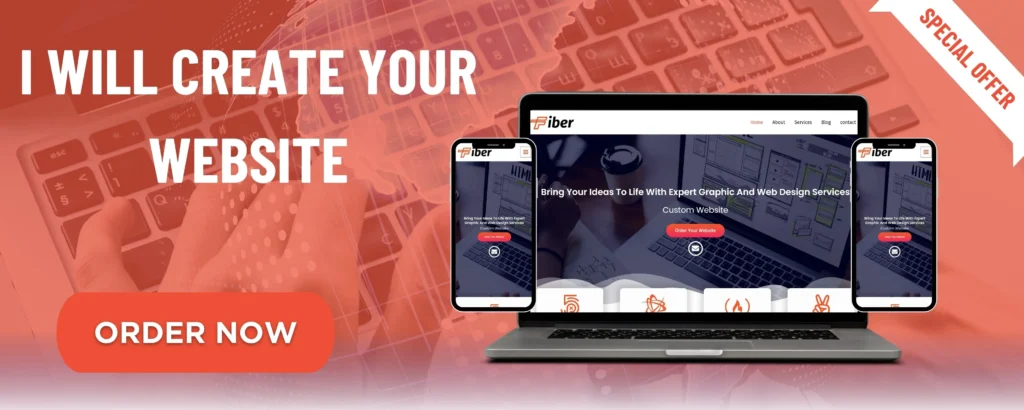
In today’s digital age, having an online presence is essential, whether you’re a small business owner, freelancer, hobbyist, or just looking to share your passion with the world. Creating a website might sound like a daunting task, especially if you don’t have technical expertise. However, with the right tools, you can build a fully functional website for free in less than an hour. Yes, you read that correctly — no coding skills required!
Here’s a step-by-step guide on how to create a website for free in under an hour.
Step 1: Choose the Right Website Builder
The first step in building your website is choosing the right website builder. Thankfully, there are many free website builders out there that are beginner-friendly and offer a range of customizable templates. Here are a few popular options:
- Wix – Known for its drag-and-drop interface and wide range of templates.
- Weebly – Offers easy-to-use templates and simple design tools.
- WordPress.com – A great choice for blogging and content-based websites.
- Google Sites – A straightforward, free tool for simple websites.
- Zyro – Provides user-friendly tools with AI-driven features.
These platforms offer free versions, though you may have to deal with some limitations, like a branded domain (e.g., yoursite.wix.com). But that’s a small trade-off when you’re just starting.
Step 2: Sign Up for an Account
Once you’ve selected your website builder, it’s time to sign up. The process is usually straightforward:
- Go to the builder’s website.
- Sign up using your email, Google account, or social media login.
- Verify your email if needed (depending on the platform).
Now that you’re all set up, you can get started on designing your website.
Step 3: Choose a Template
Most website builders will present you with a library of templates to choose from. Whether you’re looking to create a blog, portfolio, business site, or personal page, there’s a template for you.
When selecting a template, choose one that fits your needs, but don’t stress too much about perfection. You’ll be able to customize it later.
Step 4: Customize Your Template
Now the fun part begins! Customizing your website to make it truly yours. The website builders listed above all come with drag-and-drop editors, meaning you can:
- Change Text: Edit the text to reflect your personal message, whether it’s an introduction, your portfolio, or product descriptions.
- Add Images: Upload your own images, or choose from the builder’s free image library.
- Change Colors and Fonts: Most templates come with predefined color schemes, but you can adjust these to suit your style. Customizing fonts and colors helps your website stand out.
- Add Sections and Pages: Add new sections like a contact form, an “About” page, or a blog.
- Adjust Layout: You can move sections around easily or add/remove elements like buttons, images, or text boxes.
This customization process is intuitive and doesn’t require any coding knowledge. It’s about making sure your website matches your brand or personal style.
Step 5: Add Essential Features
As you build your website, there are a few key features that should be included, depending on your website’s purpose:
- Contact Form: Allow visitors to get in touch with you easily. Many builders come with drag-and-drop forms you can add to any page.
- Social Media Links: Most website builders offer easy-to-add social media icons that link to your Facebook, Twitter, Instagram, LinkedIn, or any other platform.
- SEO Tools: Ensure your site is discoverable by search engines. Many website builders include basic SEO features, allowing you to optimize your site’s title, description, and meta tags.
Don’t forget to preview your site as you make changes. This will help you make sure everything looks great on both desktop and mobile.
Step 6: Publish Your Website
Once you’re happy with your website, it’s time to make it live!
- Domain Name: On the free plan, your website will have a subdomain (e.g., yoursite.wix.com), but most website builders allow you to upgrade to a custom domain for a fee. However, for a free website, a subdomain is perfectly fine when you’re just getting started.
- Publish: Hit the “Publish” button, and voila! Your website is live for the world to see.
Step 7: Promote Your Website
Your website is up and running, but the work doesn’t stop there. To get traffic, you’ll need to promote your site. Here are a few ways to do that:
- Share it on Social Media: Spread the word by sharing the link to your new website on all your social channels.
- Ask Friends and Family: Get the word out to your network.
- Optimize for Search Engines: Use SEO best practices to improve visibility on Google.
Tips for a Successful Free Website
- Keep it Simple: Avoid cluttering your website with too many elements. A clean and easy-to-navigate design will keep visitors engaged.
- Update Regularly: If you’re using your site for blogging or as a portfolio, be sure to update your content regularly to keep visitors coming back.
- Use Free Resources: Take advantage of free resources like royalty-free images or icons to enhance your website without paying for extra design services.
Conclusion
Creating a website for free in under an hour is entirely possible with the right website builder. Whether you need a personal blog, portfolio, or small business site, the tools available today make it easy to design and launch your site without any coding knowledge.
By following these steps, you can go from zero to a live website in less than an hour, all while staying within your budget. So, why wait? Go ahead and create your own website today and start sharing your ideas with the world!